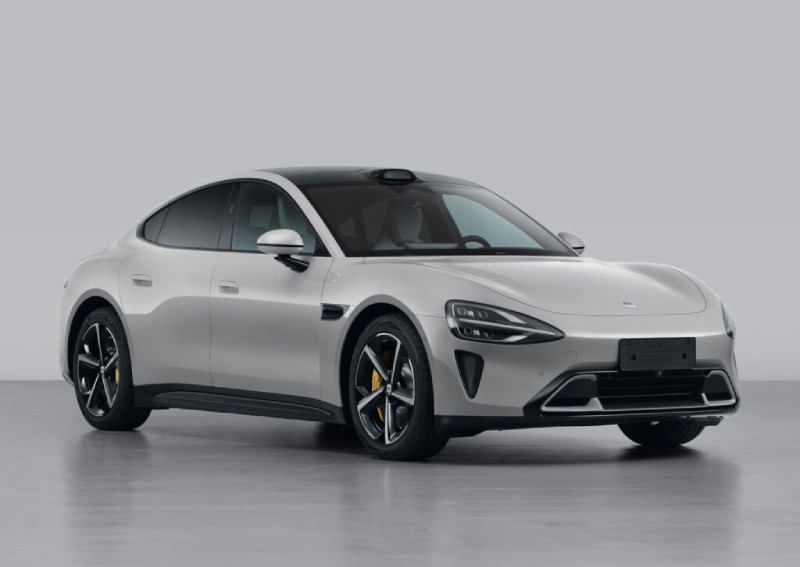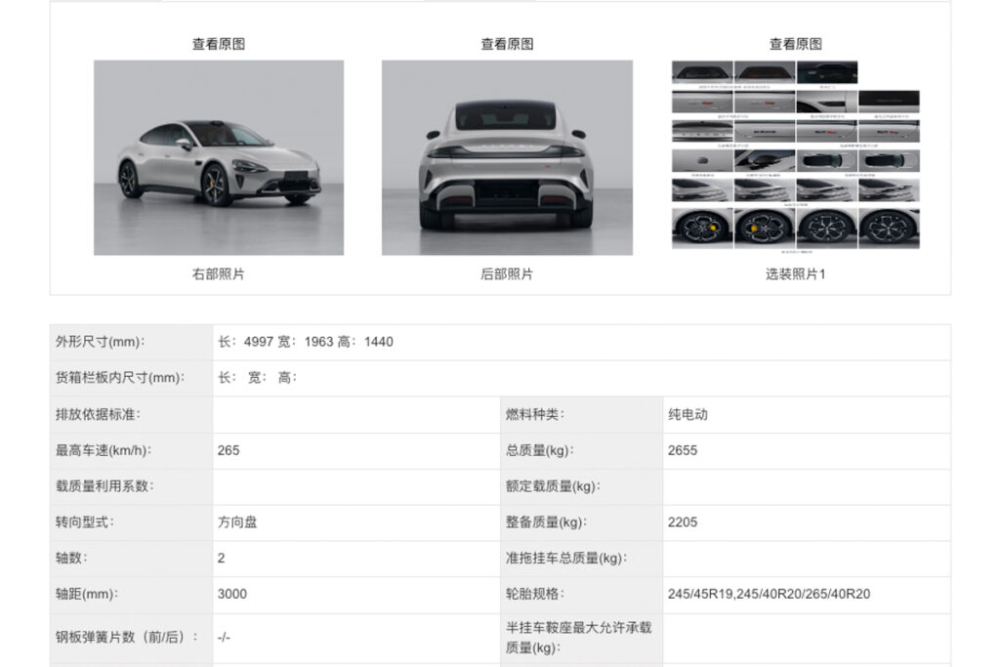This is smartphone manufacturer Xiaomi’s first EV


AsiaOne has launched EarthOne, a new section dedicated to environmental issues — because we love the planet and we believe science. Find articles like this there.
We’re familiar with Xiaomi as the brand that manufactures smartphones, smart home appliances and electric scooters.
However, according to regulatory filings from China’s Ministry of Industry and Information Technology (MIIT), it seems that the smartphone manufacturer is taking a crack at producing electric cars — beating Apple to the punch.
This is the Xiaomi SU7, an all-electric car that has four doors, seats five and in its top spec dual-motor variant, produces 663 horsepower. An EV from the same people responsible for the quad-camera Xiaomi 13 Ultra.
On the face of it, the Xiaomi SU7 is a rather fetching looking thing, with styling cues that look suspiciously reminiscent of that of the McLaren 720S (or 750S), with some hints of BYD Seal and XPeng P7 thrown in for good measure.
Round the sides, the sleek three-box design and steep roofline bear a slight resemblance to the Tesla Model S and Porsche Taycan, especially in the rear quarter with its flared rear fenders.

Based on the SU7’s thin window bezels, we’d make an educated guess that it’ll come with frameless windows, while the flush door handles and smooth surfaces hint at the car’s aerodynamic properties.
The rear sees the addition of a continuous light bar, now ubiquitous on every modern EV, and the car’s model badge just beneath the SU7’s active rear wing.

The XIaomi SU7 is a sizeable vehicle that measures 4997mm long and 1963mm wide, putting it squarely against like likes of the Porsche Taycan and Tesla Model S. However, its 3000mm wheelbase overshadows that of both cars.
According to details from the MIIT, there will be two versions of the SU7, both of which will be built by the Chinese state-owned Beijing Automotive Group (BAIC) which has joint ventures with both Hyundai and Mercedes.
The first is a single-motor RWD model that produces 295 horsepower (220kW) and has a top speed of 210km/h. The single-motor model tips the scales at 1980kg and will be fitted with a lithium-ion phosphate battery from BYD.
The second model is an AWD dual-motor model that combines a 220kW front motor with a 275kW rear motor, essentially giving the top-sped SU7 a peak output of 663 horsepower (495kW). Top speed is quoted at 265km/h while the heavier car’s kerb weight is listed at 2205kg.

The more powerful variant of the SU7 uses a ternary lithium-ion battery made by Contemporary Amperex Technology Co. Limited, or CATL for short.
If that name sounds familiar, that’s because it is. CATL produces batteries for numerous clients in China including BAIC, Geely and SAIC motor (which produces the Maxus Mifa 9 MPV). The company’s list of global clients is far more extensive, supplying batteries to the likes of Tesla, Volvo, Daimler AG, Toyota and BMW.

Details on the range figures or battery sizes for both variants of the Xiaomi SU7 are scarce at the moment, but the regulatory filings do state that the cars will be fitted with 19-inch or 20-inch rims.
In the case of the dual-motor variant, the images in the filing do show that the car will come with Brembo brakes and Michelin Pilot Sport EV tyres – 245 section and 265 section rubber in the front and rear respectively.

The car can even be equipped with a LiDAR sensor cluster mounted on the roof, which would no doubt give the SU7 some level of autonomous driving. One can even option black badges and carbon fibre wing mirror caps.
Alas, these findings are just preliminary and the car could undergo more changes before it hits the Chinese market. As for global (and Singaporean availability), chances are the Xiaomi SU7 won’t reach our shores. But we’ll hold out hope for now.
[embed]https://www.youtube.com/watch?v=Wc-rt80hROQ[/embed]
ALSO READ: Xiaomi demands payout from supplier after car designs leaked